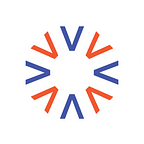Can Creativity Be Learned? 5 Best Practices to Fuel Innovation
Do you possess a creative and innovative mindset? Some people think these traits are innate while others are convinced they can be learned. Evidence shows these are teachable behaviors. Innovation research reveals only 25–40% of innovation comes from genes.
Are you looking for more ways to fuel innovation? These five skills will help you and your team get started down the path to greater creativity.
Employ Associative Thinking
Associative thinking is a valuable skill. It involves connecting problems, questions, or ideas to form solutions.
Innovation stems from a need. Perhaps there is a problem you are trying to solve. Maybe you want a way of performing a certain task more efficiently.
Start by examining all the components, then figure out how they all fit together. As you work to find a solution, consider how all the aspects will affect the end result.
Question
Begin by asking all the important questions. What is it you are trying to accomplish? What tools do you need and how will the end result impact your organization?
Innovation is about challenging the status quo. It involves asking the hard questions and navigating uncharted territories. Embrace this opportunity to evoke change.
Observe
Innovators are observant. They look for details that others might miss. It is helpful to examine a situation from different angles, then find the best approach for solving a problem.
New product ideas require a great deal of observation. You need to keep track of customer behaviors to know what will sell.
Network
Networking is a crucial part of innovation. Communicating with others will help you gain new experiences. You will learn how to see situations from varying perspectives, which will help you better understand your customers.
One way to network when innovating is to bring in people from different departments in the organization. Some of the best ideas can come from those who are not directly related to the goals of your team, but who may have valuable viewpoints to share.
Involve your customers in the idea gathering process. This gives you an opportunity to gain valuable feedback and lets them contribute to the products they will purchase.
Experiment
Experiment with ideas. This is the part of the process where you are free to think about all the possibilities and try new things. Experimentation prompts innovators to test new ideas. It is a way to gain experiences through trial and error.
The experimentation process gives you a chance to try new ideas in a controlled environment. You can introduce factors into the mix that will give you a realistic idea of how the end result will play out.
Harness the Power of Creativity
Creativity comes in many forms. Research revealed 73% of creative people believe it is a teachable trait.
By incorporating the five best practices discussed above, you can help your employees discover their creative side and encourage them to think outside the box. The end result will be a truly collaborative workplace culture where employees feel their contributions matter.
Are you looking for a way to accelerate the innovation process? contact us today to request a demo of our idea-sharing platform.
This article was originally published on the IdeaScale blog here.
